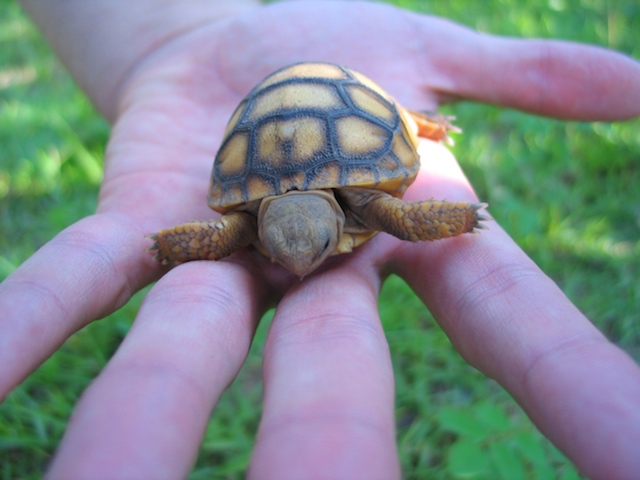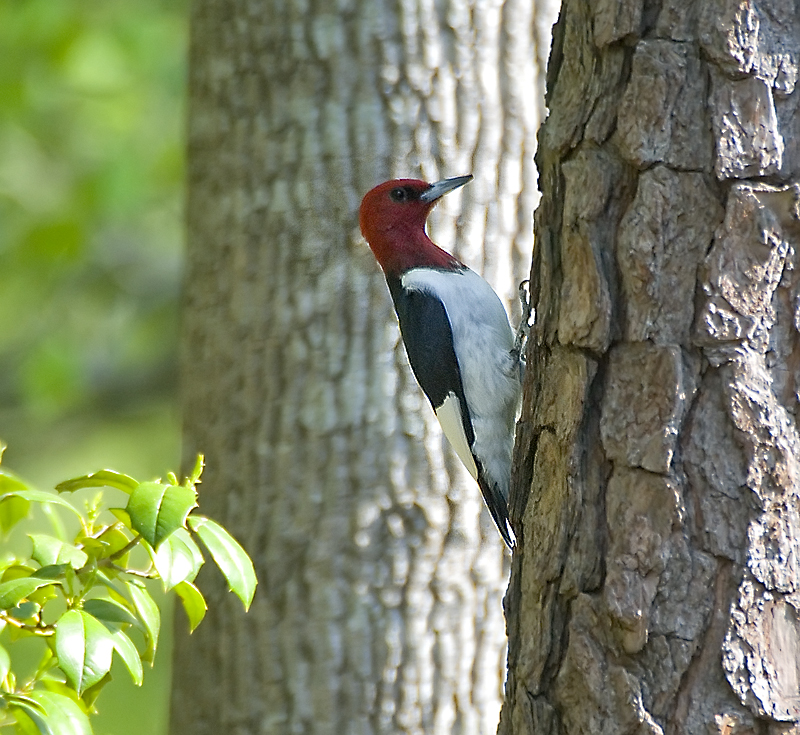|
Janisse Ray
Janisse Ray (born February 2, 1962) is an American writer, naturalist, and environmental activist. Early life and education Ray was born in a small town, Baxley, Georgia, the county seat of Appling County, in the southeast region of the state. She is the daughter of loving parents, Franklin D. and Lee Ada Branch Ray. She grew up with one sister, Kay, and two brothers, Steve and Dell. Ray’s family was deeply rooted in the area where she grew up, going back at least six generations. Ray’s ancestors were listed in the first census in Appling county in 1820 and the town of Baxley was named for an ancestor as well. From 1980 to 1982, she attended North Georgia College where she found her passion for ecology, which led her to her career. She received a Bachelor of Arts from Florida State University and a Master of Fine Arts from the University of Montana. Career ''Ecology of a Cracker Childhood'' (1999) recounts Ray's experiences growing up in a junkyard, the daughter of a p ... [...More Info...] [...Related Items...] OR: [Wikipedia] [Google] [Baidu] |
Baxley, Georgia
Baxley is a city in Appling County, Georgia, Appling County, Georgia (U.S. state), Georgia, United States. As of the 2020 United States Census, 2020 census, the city had a population of 4,942. The city is the county seat of Appling County. History Baxley was first settled as a result of the Macon and Brunswick Railroad being built through Appling County in 1870. Originally, it was a railroad depot known as Station Number 7, but soon was named Baxley (after one of the community's first settlers, Wilson Baxley of North Carolina). Baxley incorporated in 1875. Geography Baxley is approximately east of Douglas, Georgia, Douglas, north of Waycross, Georgia, Waycross and southwest of Glennville, Georgia, Glennville. According to the United States Census Bureau, the city has a total area of , of which , or 0.16%, is water. Demographics 2020 census As of the 2020 United States census, there were 4,942 people, 1,436 households, and 1,068 families residing in the city. 2010 census ... [...More Info...] [...Related Items...] OR: [Wikipedia] [Google] [Baidu] |
Flatwoods Salamander (other)
Flatwoods salamanders are mole salamanders of Florida, Georgia, and South Carolina: * ''Ambystoma cingulatum The frosted flatwoods salamander (''Ambystoma cingulatum'') is a small (9-13.5 cm total length), elongated species of mole salamander. It has a small, indistinct head, short legs, and a long, rounded tail. Typical coloration consists of ...'', the frosted flatwoods salamander, native to the coastal plan in South Carolina, Georgia, and Florida east of the Apalachicola River * '' Ambystoma bishopi'', the reticulated flatwoods salamander, native to the western Florida panhandle and southwestern Georgia {{disambiguation Animal common name disambiguation pages ... [...More Info...] [...Related Items...] OR: [Wikipedia] [Google] [Baidu] |
Gopher Tortoise
The gopher tortoise (''Gopherus polyphemus'') is a species of tortoise in the family Testudinidae. The species is native to the southeastern United States. The gopher tortoise is seen as a keystone species because it digs burrows that provide shelter for at least 360 other animal species. ''G. polyphemus'' is threatened by predation and habitat destruction. The gopher tortoise is a representative of the genus '' Gopherus'', which contains the only tortoises native to North America. The gopher tortoise is the state reptile of Georgia and the state tortoise of Florida. Etymology The specific name, ''polyphemus'', refers to the cave-dwelling giant, Polyphemus, of Greek mythology. Gopher tortoises are so named because of some species' habit of digging large, deep burrows like the gopher. Description The gopher tortoise is a fairly large terrestrial reptile which possesses forefeet well adapted for burrowing, and elephantine hind feet. These features are common to most tortoise ... [...More Info...] [...Related Items...] OR: [Wikipedia] [Google] [Baidu] |
Quail
Quail is a collective name for several genera of mid-sized birds generally placed in the order Galliformes. The collective noun for a group of quail is a flock, covey, or bevy. Old World quail are placed in the family Phasianidae, and New World quail are placed in the family Odontophoridae. The species of buttonquail are named for their superficial resemblance to quail, and form the family Turnicidae in the order Charadriiformes. The king quail, an Old World quail, often is sold in the pet trade, and within this trade is commonly, though mistakenly, referred to as a "button quail". Many of the common larger species are farm-raised for table food or egg consumption, and are hunted on game farms or in the wild, where they may be released to supplement the wild population, or extend into areas outside their natural range. In 2007, 40 million quail were produced in the U.S. New World *Genus ''Callipepla'' **Scaled quail, (commonly called blue quail) ''Callipepla squamata'' **E ... [...More Info...] [...Related Items...] OR: [Wikipedia] [Google] [Baidu] |
Common Ground Dove
The common ground dove (''Columbina passerina'') is a small bird that inhabits the southern United States, parts of Central America, the Caribbean and northern South America. It is considered to be the smallest dove that inhabits the United States. As its name suggests, the bird spends the majority of its time on the ground walking but still has the ability to fly. Taxonomy The common ground dove was formally described by the Swedish naturalist Carl Linnaeus in 1758, in the tenth edition of his '' Systema Naturae''. He placed it with all the other pigeons in the genus '' Columba'' and coined the binomial name ''Columba passerina''. The specific name ''passerina'' is from the Latin ''passerinus'' meaning "sparrow-like". The species is now placed with other New World ground-doves in the genus ''Columbina'' that was introduced in 1825, by the German naturalist Johann Baptist von Spix. There are nine species in this genus including the Inca dove (''Columbina inca'') and the scal ... [...More Info...] [...Related Items...] OR: [Wikipedia] [Google] [Baidu] |
Eastern Kingbird
The eastern kingbird (''Tyrannus tyrannus'') is a large tyrant flycatcher native to the Americas. The bird is predominantly dark gray with white underbelly and pointed wings. Eastern kingbirds are conspicuous and are commonly found in open areas with scattered trees and bushes, where they perch while foraging for insects. The Eastern kingbird is migratory, with its breeding range spread across North America and its wintering range in Central and South America. Taxonomy The eastern kingbird was Species description, described by the Swedish naturalist Carl Linnaeus in 1758 in the 10th edition of Systema Naturae, tenth edition of his ''Systema Naturae'' under the binomial nomenclature, binomial name of ''Lanius tyrannus''. The present genus ''Tyrannus'' was introduced in 1799 by the French naturalist Bernard Germain de Lacépède with the eastern kingbird as the type species. The species is monotypic; no subspecies are recognised. Description Adults are grey-black on the upperparts ... [...More Info...] [...Related Items...] OR: [Wikipedia] [Google] [Baidu] |
Red-headed Woodpecker
The red-headed woodpecker (''Melanerpes erythrocephalus'') is a mid-sized woodpecker found in temperate North America. Its breeding habitat is open country across southern Canada and the east-central United States. It is rated as least concern on the International Union for Conservation of Nature (IUCN)'s Red List of Endangered species, having been down-listed from near threatened in 2018. The red-headed woodpecker should not be confused with the red-bellied woodpecker, which is similar in size but has a vibrant orange-red crown and nape; the red-bellied woodpecker is named for the pale reddish blush of its lower belly and has a distinctly patterned black and white back rather than the solid black one of the red-headed woodpecker. Taxonomy The English naturalist Mark Catesby described and illustrated the red-headed woodpecker in his book ''The Natural History of Carolina, Florida and the Bahama Islands'', which was published between 1729 and 1732. Catesby used the English name ... [...More Info...] [...Related Items...] OR: [Wikipedia] [Google] [Baidu] |
Yellow-breasted Chat
The yellow-breasted chat (''Icteria virens'') is a large songbird found in North America, and is the only member of the family Icteriidae. It was once a member of the New World warbler family, but in 2017, the American Ornithological Society moved it to its own family. Its placement is not definitively resolved. Taxonomy The yellow-breasted chat was formerly considered the largest member of the family New World warbler, Parulidae, but following taxonomic studies, it was moved to the Monotypic taxon, monotypic family Icteriidae. Although Icteriidae is a distinct family from the Icterid, New World blackbirds (Icterid, Icteridae), which have a very similar name, taxonomic studies support them as being the closest living relatives of one another, and in a 2019 study Carl Oliveros and colleagues actually classified the yellow-breasted chat as a member of Icteridae. In addition, the former grouping of the yellow-breasted chat as a warbler was not too far off, as Parulidae is now consi ... [...More Info...] [...Related Items...] OR: [Wikipedia] [Google] [Baidu] |
Brown-headed Nuthatch
The brown-headed nuthatch (''Sitta pusilla'') is a small songbird endemic to pine forests throughout the Southeastern United States. Genetic analyses indicated low differentiation between northern and southern populations in Florida, but the study also found lower genetic diversity among south Florida populations that may be a result of the increased habitat fragmentation that was documented. The Bahama nuthatch was formerly considered a subspecies (''S. p. insularis''), has since been reclassified as its own separate species. Two recent studies assessing vocalizations in Bahama and continental nuthatch populations found important differences. One of the studies also demonstrated that continental and Bahama populations did not respond aggressively to calls of the other population. This type of call-response study is often used to help define cryptic species. The bird, like other nuthatches, possesses a sharp black nail-like beak, which it uses to pound open seeds. It is a frequ ... [...More Info...] [...Related Items...] OR: [Wikipedia] [Google] [Baidu] |
Eastern Bluebird
The eastern bluebird (''Sialia sialis'') is a small North American migratory thrush found in open woodlands, farmlands, and orchards. The bright-blue breeding plumage of the male, easily observed on a wire or open perch, makes this species a favorite of birders. The male's call includes sometimes soft warbles of ' or ', or the melodious song '. It is the state bird of Missouri and New York. Taxonomy The eastern bluebird was formally described by the Swedish naturalist Carl Linnaeus in 1758 in the tenth edition of his ''Systema Naturae'' under the binomial name ''Motacilla sialis''. The type location is South Carolina. Linnaeus based his short Latin description on the earlier more detailed descriptions by the English naturalists Mark Catesby and George Edwards. The eastern bluebird is now placed in the genus '' Sialia'' that was introduced by the English naturalist William John Swainson in 1827 with the eastern bluebird as the type species. Seven subspecies are recognis ... [...More Info...] [...Related Items...] OR: [Wikipedia] [Google] [Baidu] |
Red-cockaded Woodpecker
The red-cockaded woodpecker (''Leuconotopicus borealis'') is a woodpecker endemic to the southeastern United States. Description The red-cockaded woodpecker is small to mid-sized species, being intermediate in size between North America's two most widespread woodpeckers (the downy and hairy woodpeckers). This species measures in length, spans across the wings and weighs . Among the standard measurements, the wing chord is , the tail is , the bill is and the tarsus is . Its back is barred with black and white horizontal stripes. The red-cockaded woodpecker's most distinguishing feature is a black cap and nape that encircle large white cheek patches. Rarely visible, except perhaps during the breeding season and periods of territorial defense, the male has a small red streak on each side of its black cap called a ''cockade'', hence its name. The species is listed as Near Threatened by the IUCN and as Endangered by the United States Fish and Wildlife Service. Behavior The red ... [...More Info...] [...Related Items...] OR: [Wikipedia] [Google] [Baidu] |




.jpg)

